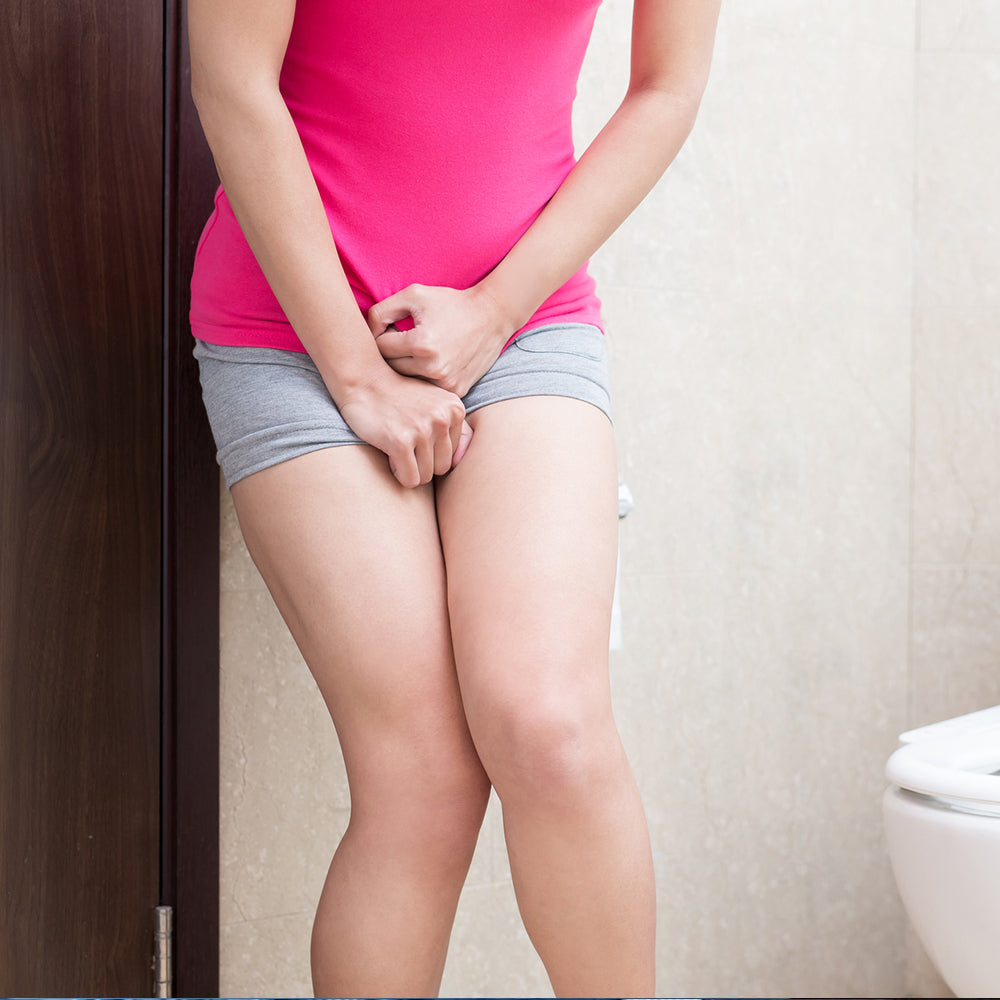
What is Urge Incontinence?
Share
Urge incontinence, also known as frequent urination or overactive bladder, refers to a sudden and uncontrollable urge to urinate, often with little warning. The condition occurs when the urinary bladder contracts when it shouldn’t, causing urine to leak through the sphincter muscles holding the bladder closed. Urge is a type of urinary incontinence, which is a framework of conditions that cause a loss of voluntary control over urination.
'Latch key' urgency is commonly experienced in people with poor bladder control, and refers to the immediate and urgent need to go to the toilet as soon as the key is put in the door when you get home, often resulting in leakage.
Urge incontinence is a common condition that can affect anyone, although women and older adults are at a higher risk of developing it. It is not a disease in its own right, and is often a symptom of medical issues or lifestyle.
If you think you are suffering from urge incontinence, no matter the severity, it is important you speak to a doctor who can diagnose your specific type of incontinence and its cause, as well as discuss any potential treatment options.
Urge Incontinence Symptoms
Symptoms of urge incontinence include needing to urinate often and without control, even during the night. People with urge incontinence will often find it difficult to reach the toilet in time.
What Causes Urge Incontinence?
Urge incontinence is generally caused by the bladder contracting abnormally1. Sphincter muscles are responsible for the control and release of urine in a healthy bladder, but with urge incontinence, the muscles in the bladder are overactive, and contract and spasm, making you feel as though you need to urinate, even when the bladder isn't full.
Other causes of urge incontinence can include:
- Increased fluid intake, particularly diuretics such as caffeine and alcohol
- Drop in oestrogen levels in women during the menopause
- Enlarged prostate in men
- Stress and anxiety
- Serious disease - Parkinson's, stroke, Multiple Sclerosis (consult your GP if you're concerned)
- Spinal cord damage
- Bladder cancer
- Bladder stones
How is urge incontinence diagnosed?
To diagnose urge incontinence and develop a treatment plan, your doctor may ask you about your medical history and any history of incontinence. They will also likely perform a physical examination including a pelvic exam and taking a urine sample.
Your doctor may also perform additional tests for urge incontinence if necessary, including:
- Pelvic floor assessment
- Urinalysis
- Urine culture
- Urinary bladder ultrasound
- Cystoscopy
- X-ray studies
- Urodynamic studies
- Stress testing
How To Treat Urge Incontinence
There are several treatments for urge incontinence, from at-home remedies such as lifestyle changes and pelvic floor exercises to medical treatments for more severe cases.
Simple lifestyle changes such as reducing intake of fluids before bed, particularly caffeinated or alcoholic beverages can help to alleviate the symptoms of urge incontinence. Alleviating stress and anxiety can also help.
Pelvic floor exercises are also used for urge incontinence to restore bladder control. INNOVO offers a compelling and innovative alternative to manual pelvic floor exercises, and also has a specific urge incontinence programme that focuses on calming down the bladder muscles that are overactive. Read more about pelvic floor exercises and how to do them.
INNOVO is a clinically proven, truly non-invasive and long-lasting solution to urinary incontinence. Easy to use and comfortable to wear, INNOVO helps you safely and effectively strengthen and re-educate the entire network of pelvic floor muscles through gentle muscle stimulation.
Using INNOVO for just 30 minutes a day/five days a week over 12 weeks has been proven to treat bladder weakness - delivering effective results in as little as 4 weeks2.
INNOVO treats Stress, Urge and Mixed Incontinence in women and men of all ages, and is the only non-invasive pelvic floor exerciser that targets the root cause of the problem. INNOVO's urge incontinence programme can help with an overactive bladder as the stimulations are designed to calm down the muscle spasms that occur and which trigger your constant need to use the loo.
A clinical study found that:
- 80% of users saw a significant reduction in leaks after just 4 weeks2
- 87% of users were defined as either dry or almost dry after 12 weeks3
- 90% of users would recommend the therapy to others4
